Since we’ve visited botanical gardens across the country during our time on the road, it should come as no surprise that our itinerary included a week-long stay in Northern California to explore the extensive Redwood National and State Parks. And it’s equally unsurprising that we found the redwoods to be utterly majestic, breathtaking, impressive, and soul-soothing.
“The Redwoods” is not just one park in one specific location. Rather, the preserved public lands are located within one national park (Redwood) and three separate California state parks (Jedediah Smith Redwoods, Del Norte Coast Redwoods, and Prairie Creek Redwoods) which collectively cover almost 40,000 acres.* This green band stretches down 70 miles of the rugged northern California coast, and includes miles of pristine coastline.
Just driving up and down US 101 to reach the different sections of the park offered a daily feast for the eyes. But the stars of the show are, without a doubt, the coast redwoods.
The Enchanted Forest
Coast redwoods are huge, ancient trees. They can reach heights of almost 400 feet, taller than any other trees on earth. In mature groves — the ones that were not logged in the past 150 years — the average trees are 500 years old while the oldest are 2,000 years old. Individual trees can be extremely old, but the lineage of redwoods is also ancient. Similar trees lived hundreds of millions of years ago, when dinosaurs ruled the planet. All of this creates a magical, primeval ambiance in the forest. The trunks of the coast redwoods are not quite as wide as their close relatives the giant sequoias, but coast redwoods are taller and the mature trees have trunk diameters of more than 20 feet. The huge size of these trees is hard for the mind to grasp, much less capture in photos.
While at first glance the forest may seem to be a collection of identical trees, upon closer inspection it is apparent that each tree is an individual. Some of the ancient redwoods stand ramrod straight, with orderly vertical indentations in their bark, resembling the columns of the Parthenon. Some trees have grown on trunks with minor bends, so they look like they are dancing. The famous Corkscrew Tree grew its trunk in a twisting pattern that seems almost grotesque.
The individual trees also show the scars of their life experiences, much like the faces of people who have lived interesting lives. A surprising number of trees are still alive despite large hollows, scars, tumors, and burn wounds. Knowing that all of these trees had survived everything since the arrival of Columbus in the Americas, and the oldest had been around since the time of Jesus Christ, it was easy for us to believe that these trees were inhabited by wise, ancient spirits.
This is probably a good time to admit that my favorite characters in Tolkein’s Lord of the Rings were the Ents, the tall, long-lived, slow-speaking “tree-herders” who could generally not be bothered with the problems of the human population, and focused on tending their forests. With our imaginations filled with thoughts of the Ents, it was devastating for us to realize that 95% of the original 2 million acres of old growth redwood forests fell to loggers in the span of just 150 years.
Water, Water Everywhere
Contrary to popular belief, our home base of South Florida is not a particularly wet environment — at least not in the winter. The dry winter months feature warm, sunny weather and very little precipitation, so our native plants are well adapted to these almost desert-like conditions. I spent years advocating for more extensive use of native plants in landscaping, to help preserve our precious fresh water resources. I also loved cultivating non-native succulents, marveling at their waxy leaves and other clever adaptations for succeeding in dry environments.
Walking into a redwood forest completely defies all my basic instincts about water conservation. Virtually every available surface is covered with squishy, water-hungry living things. Everything other than the trunks of living redwoods is completely furred with mosses and lichens, and tree branches are draped with beard-like hanging mosses. In the densest forests, waist-high sword ferns form the primary understory. The ground is blanketed with redwood sorrel, which looks like clover but shyly hides a lovely reddish color on the undersides of its leaves. Mushrooms sprout from the thick leaf litter on the ground and from downed trees.
Unlike desert plants that jealously guard their precious water, plants here are practically gluttonous in their constant intake of water. And in fact, the problem in the redwood forest is too much water! The ecosystem receives 100+ inches of rain during the winter rainy season, and during the summer the cloud-scraping redwood trees capture water from fog banks and create “rain” in the forest. As a result, this environment is always damp. The core forest species, the coast redwood, has several important features that allow it to thrive in this wet environment, the most important of which is that the tree’s bark and wood both secrete anti-fungal chemicals. This explains why the trunks of healthy redwood trees are almost completely free of mosses and lichens, with their dramatic reddish-gray bark standing out in the dim light of the forest. Other plants in the ecosystem, like the vine maple, have managed to survive despite having their branches completely encased in mosses.
All that water leads to the wild proliferation of leafy green life everywhere, and a smell and feel of moisture in the air. Another result is an almost uncanny silence in the forest. The dense foliage and spongy ground absorbs sounds, so the forest is strangely free of echoes or far-off sounds. While the wind may whip fiercely off the Pacific, it is stopped cold by the dense forest, and becomes merely a distant whisper to those on the forest floor. Bird calls are only audible if the birds are very close by, so hearing birds was a sign that we should be looking for them within a few feet of us.
A Light in the Forest
We were fortunate to have days filled with clear, cloudless skies and blinding sunlight throughout our stay. Despite the cheerful skies, the dense forest canopy kept the quiet interior of the forest dimly lit at best. We were completely enveloped in deep shade from the moment we entered the forest. Yet in places sunlight knifed through the gaps in the canopy in dramatic shafts, highlighting small, shifting areas of the forest floor with a sort of natural spotlight. The bright sunlight also gave the moss-covered understory plants an iridescent glow.
Circle of Life
One of the interesting biological features of coast redwoods is that they have dual methods of propagation. Their normal sexual reproduction involves cones which, at only two inches long, are almost comically small. But the redwoods have another trick up their sleeve: they can also reproduce by clone. When a tree suffers an injury or disease, it allows clones to start growing around its base, sharing its existing root system. As a result, there are many family trees clustered in tight groups around an injured or dead parent tree. Of course, given the antifungal qualities of the redwood bodies, and the immense size of the trees, it’s often hard to tell from the ground level what sort of injury the parent might have. There might be 150 feet of healthy-looking trunk under a crown that’s been completely snapped off. When trees go down — which is pretty common given their shallow root systems — they serve as a perfect incubator for all sort of forest life. So even dead trees are important contributors to the cycle of life and rebirth in this ecosystem.
Our Destinations
Many of the densest groves of ancient trees are accessible from short hikes through the forest, so we did a half-dozen very short hikes (<2 miles) which involved wandering through the forests on easy paths and craning our necks at the giants surrounding us. Some of those hikes included visits to the Stout Grove, Leiffert Grove, Ellsworth Grove, Lady Bird Johnson Grove, Access Trail, Revelation Trail, Corkscrew Tree, and Big Tree Circle Trail.
We were a little constrained for time thanks to our multiple visits to Eureka for truck repairs, so we only tackled two longer hikes during our visit. At a little over 7 miles, the Miner’s Ridge-Clintonia-James Irvine loop trail was our longest hike and also the most diverse. We hiked through 5 miles of redwood forest, with different types of understory plants in different sections creating entirely different experiences, until we reached the east end of Fern Canyon. This half-mile-long channel has 50-foot walls that weep water and are covered in multiple types of ferns. The canyon reportedly was part of the set for Jurassic Park, and it certainly feels primeval. The stream through the middle of the canyon is the trail, so we spent a while hopping on rocks and hoping to keep our feet as dry as possible. The trail finished up with a 1.5 mile walk down Gold Bluffs Beach, home to herds of the formerly-endangered Roosevelt Elk. While we only saw elk hoofprints and scat, no actual elk, it was glorious to finish the hike with a walk down a wide and nearly deserted beach. Our wet, sand-encrusted shoes were a complete mess, but that was a small price to pay for such a great hike.
Our other main hike was the West Ridge-Zig Zag-Prairie Creek Loop, also in the Prairie Creek Redwoods State Park, which clocked in at a little over 5 miles. One of the best features of this hike was that it started with about 800 feet of elevation gain and then ran along the top of a ridge. We’ve found that the hikes that include some elevation offer one of the best perspectives on the redwoods, since from the top of the ridge hikers are at eye level with the middle sections of trees down in the valley. It’s our only chance to take in a whole tree at once. You might think that a person would get used to seeing these trees, but even after a week we found ourselves rounding corners on the trail and stopping short just to crane our necks yet again and say, “Wow!”
During our visit to the redwoods, we continued to be successful in using our not-so-secret plan of hitting the trails to get away from the crowds. The shorter trails (described in park brochures as “short walks”) were often surprisingly full of other visitors. Of course, my definition of busy involves seeing a dozen people in one place on a weekday, especially when the area is located down a twisty, unpaved one-lane road. In any event, on our two longest hikes we only saw, respectively, 4 and 8 other hikers on the trails once we got away from the parking lots.
Truck Repairs
While we would have liked to completely lose ourselves in the magic of the forests, we needed to retain our focus throughout the week on getting our truck back in working order so we could pull out on schedule. We were a little crushed when we learned that the Ford dealership in Eureka wasn’t taking appointments for over a week, but soon we had a series of good experiences that helped affirm our faith in humanity. First, sensing the urgency of our needs, the head of service at the dealership referred us to a local shop that specializes in servicing Ford vehicles. I like using small local businesses, but being on the road makes it hard to discern which ones have a reputation for quality and honesty. Receiving a referral from the Ford dealer gave us the confidence to reach out to the local auto shop, and we are glad we did. The whole team at the shop treated us with nothing but caring and respect. Knowing that we were in a bind, the guys at the small shop were able to see us immediately for diagnosis, and ordered the needed part via overnight delivery. We did have a small snafu (of course!!) involving the part in the box not being the actual part ordered, but a replacement was soon on its way. Starting with a panicky call from me on Monday, by Friday mid-day we were back in business with a fully functional towing system, courtesy of a brand new trailer brake controller. Even though we were just passing through town and obviously not going to become long-term customers of this auto shop, we felt they were honest, candid, and not at all interested in gouging us. Between the generous referral from the service leader at the dealership and the personal attention at the shop we used, it was a great experience, even if it did involve multiple drives to Eureka.
Now we continue our journey south through California to Napa, where we can give our sore necks a rest and recuperate with wine tastings.
* There are other places to see old growth redwoods in Northern California, including Humboldt Redwoods State Park, Richardson Grove State Park, and Muir Woods National Monument. We were most interested in the area around the national park, especially since it also features coastline and beaches.
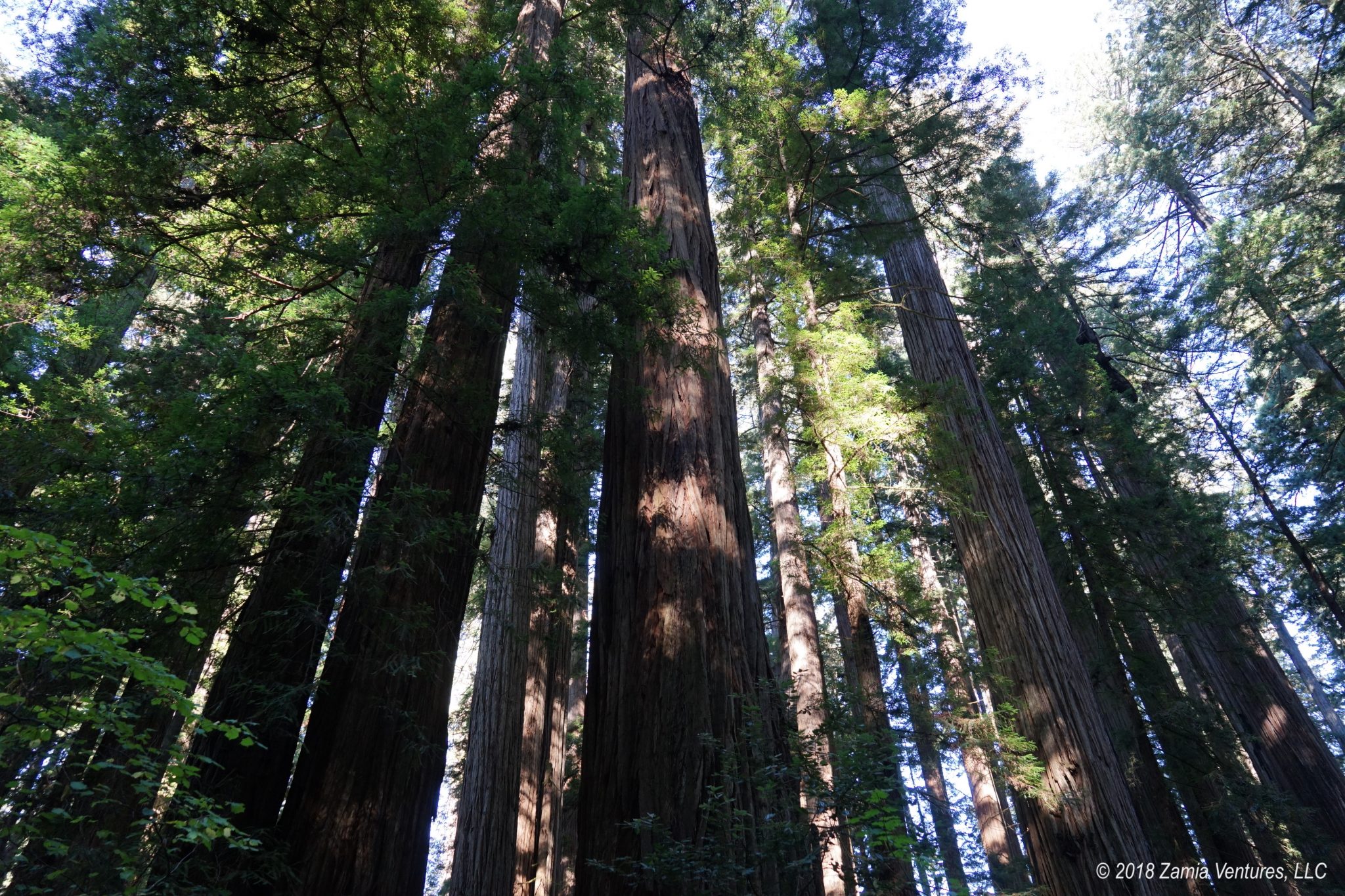
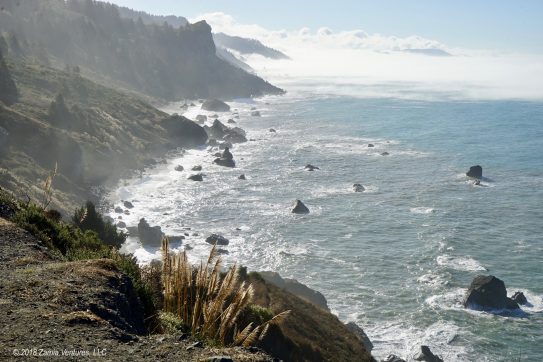
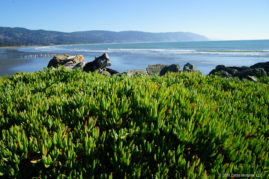
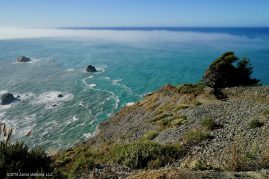
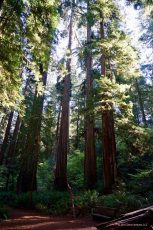
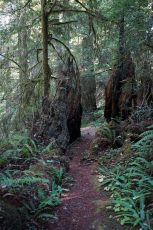
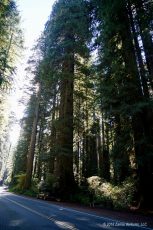
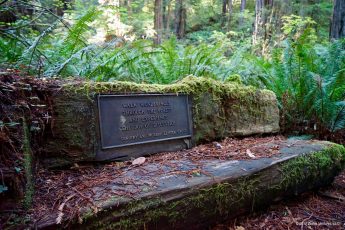
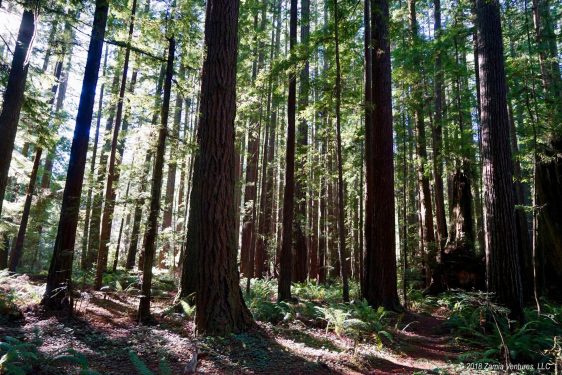
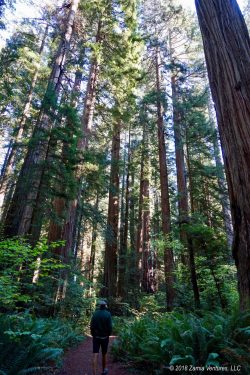
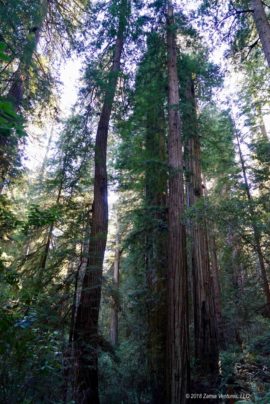
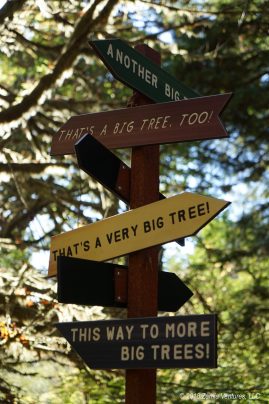
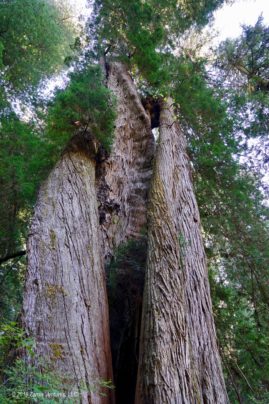
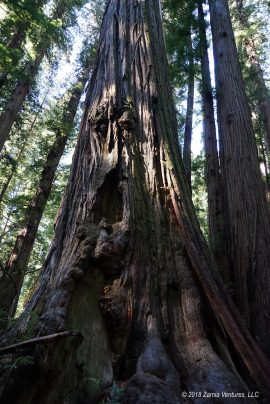
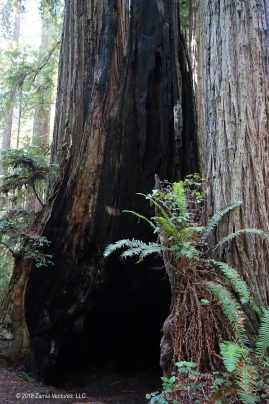
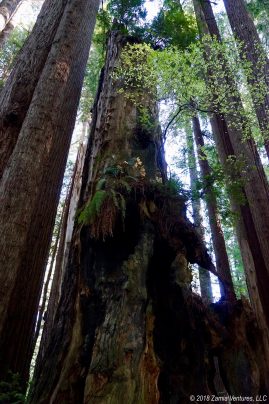
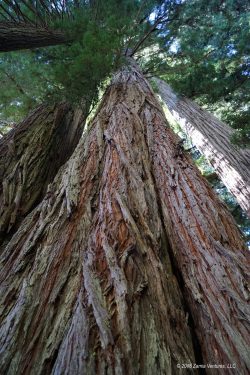
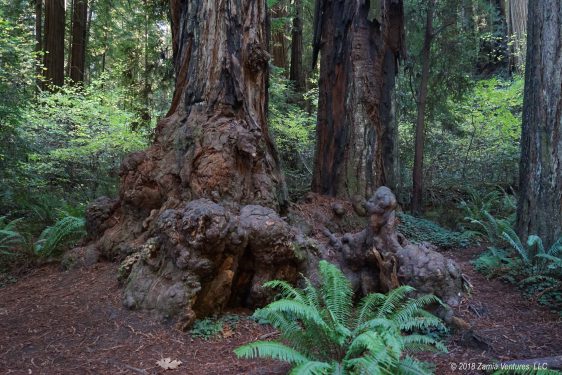
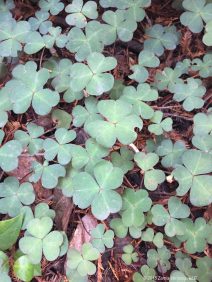
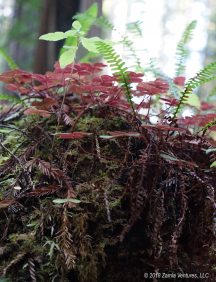
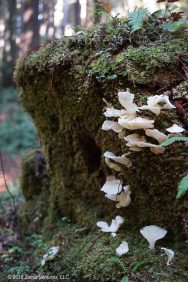
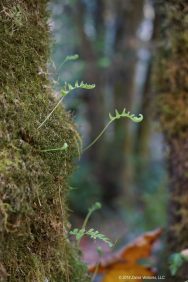
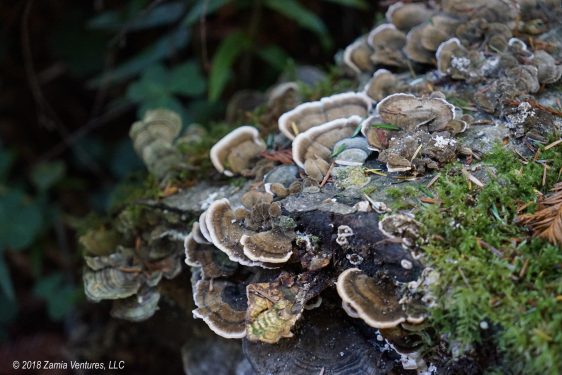
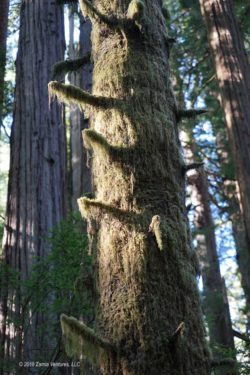
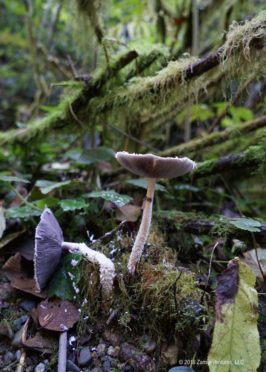
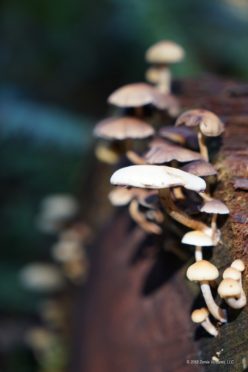
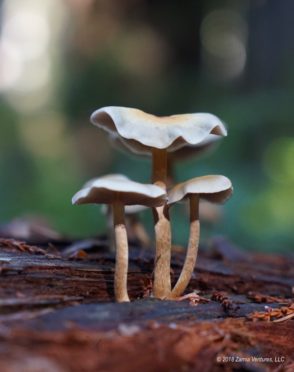
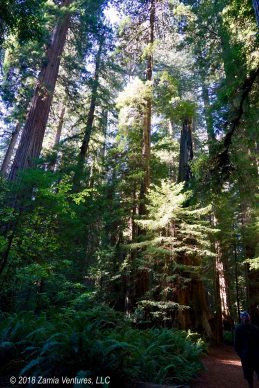
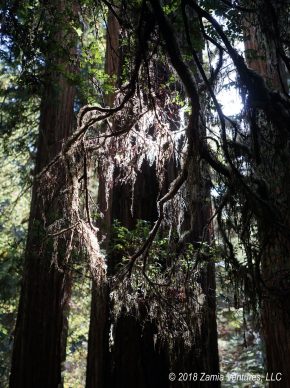
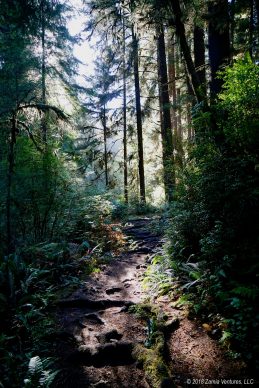
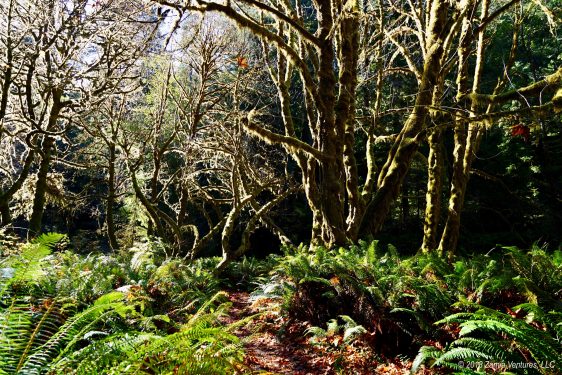
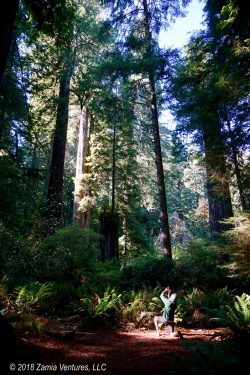
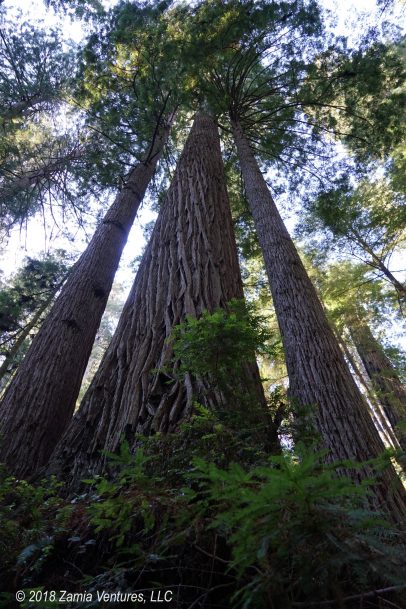
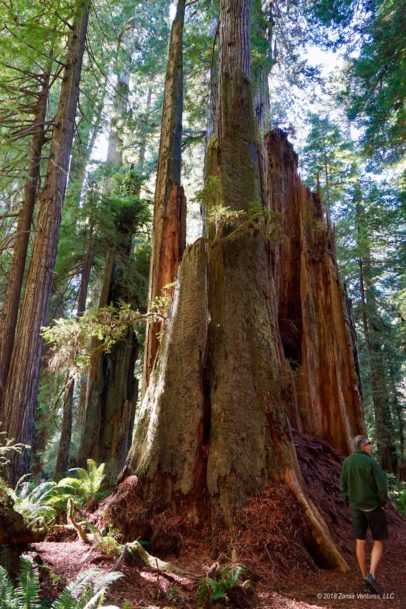
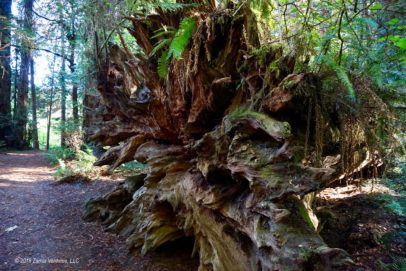
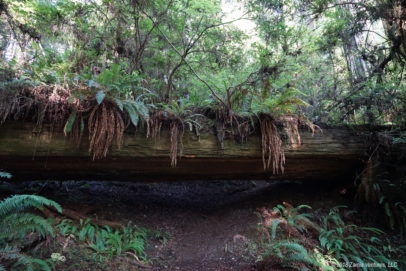
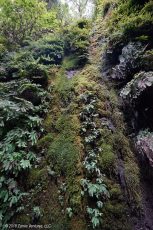
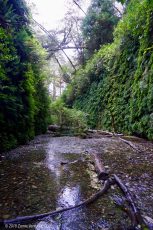
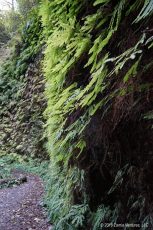
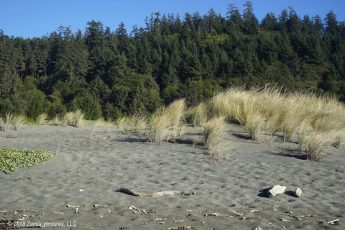
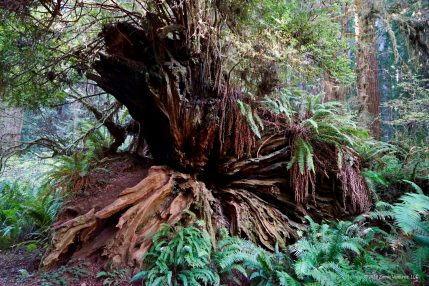
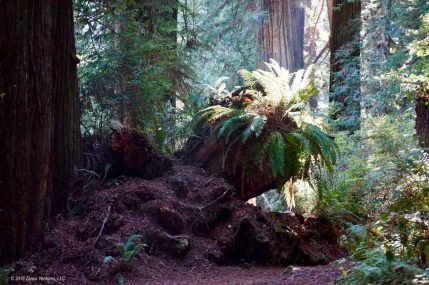
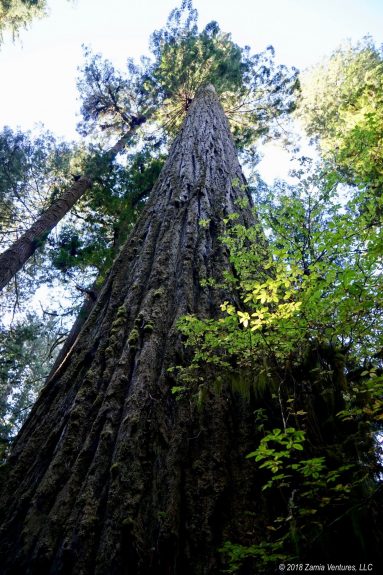
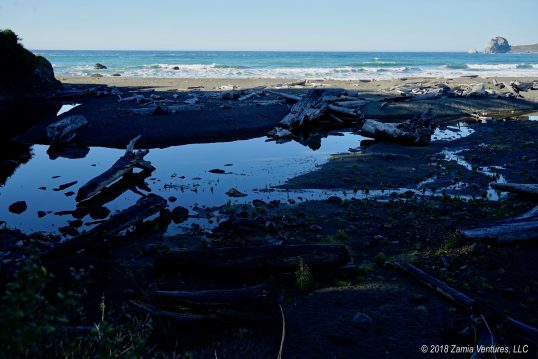
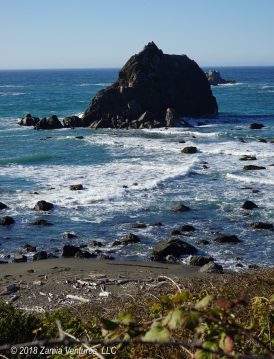
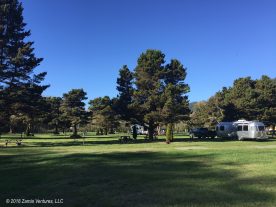
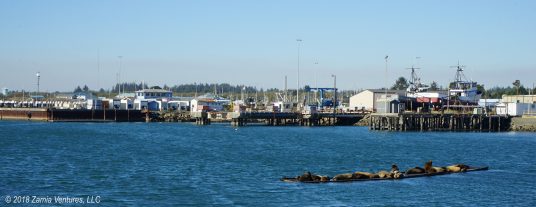
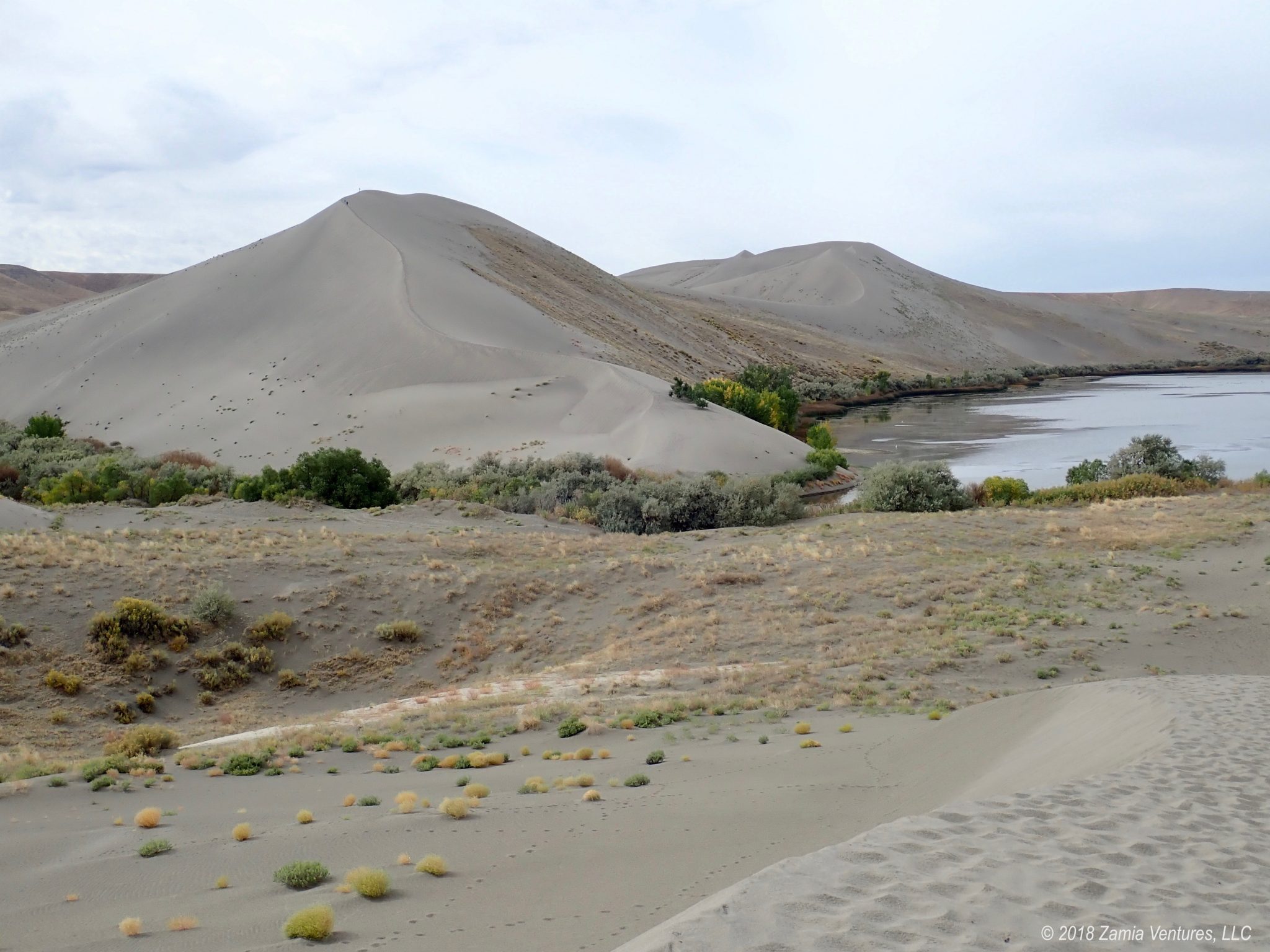
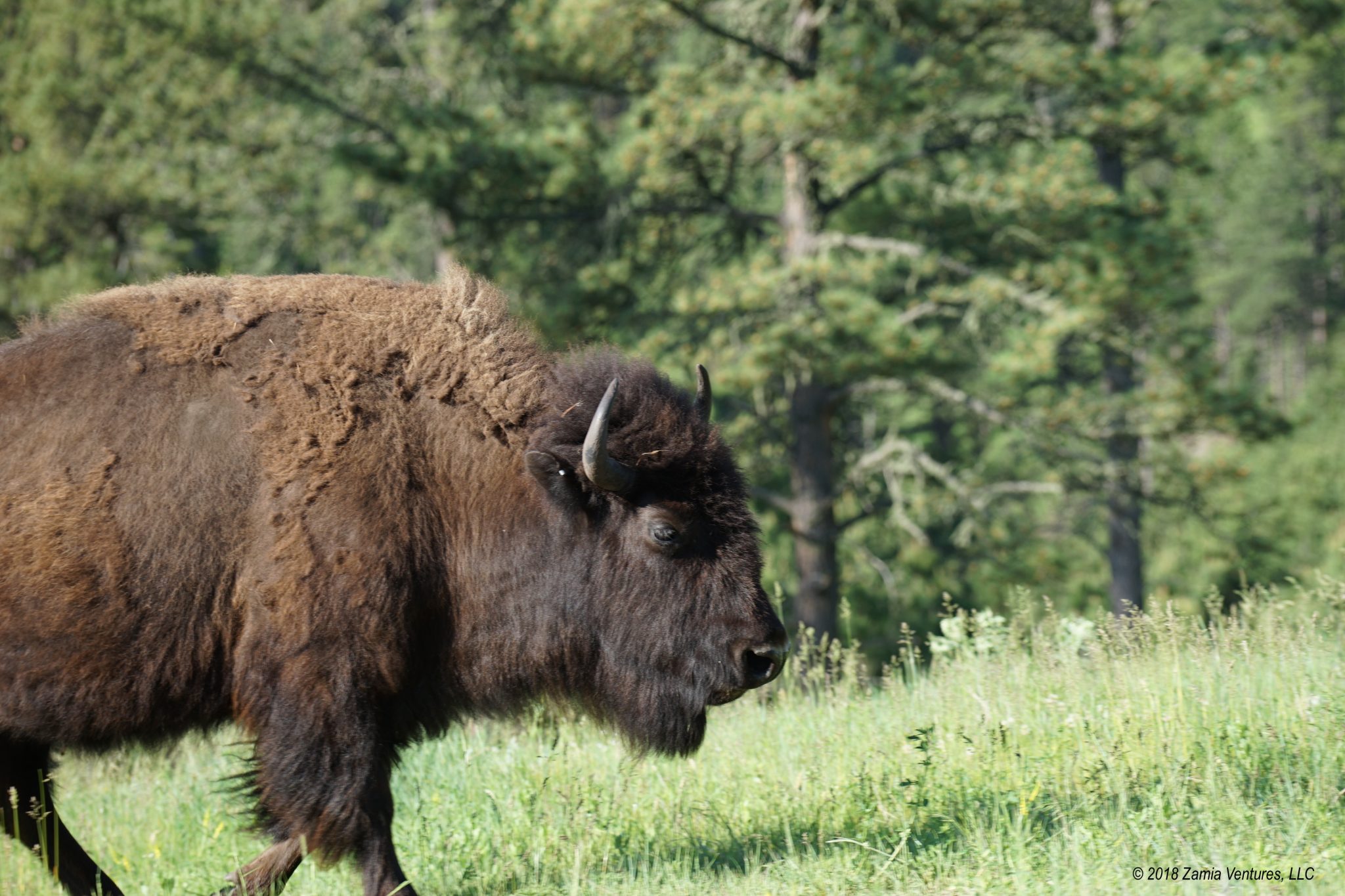
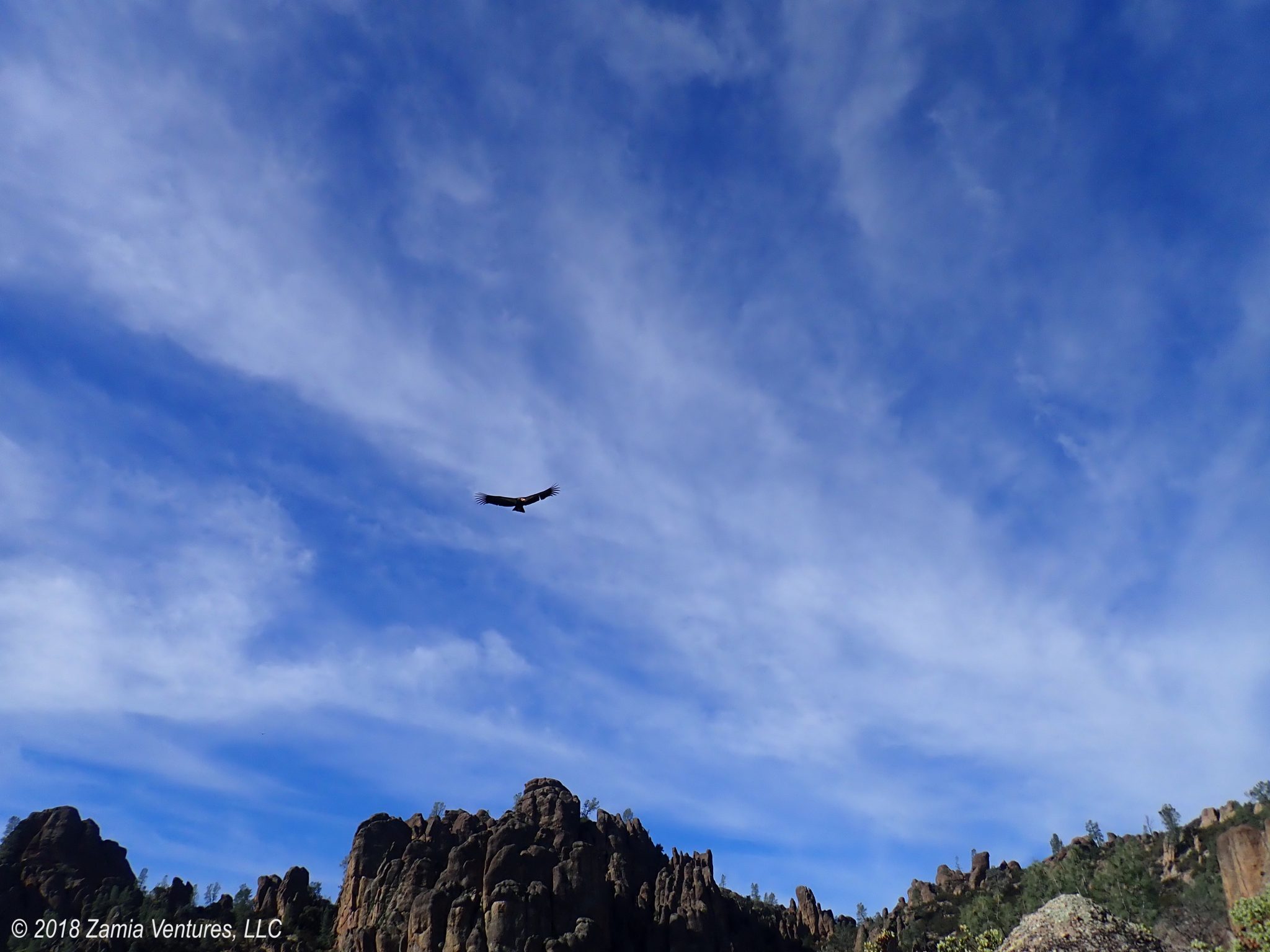
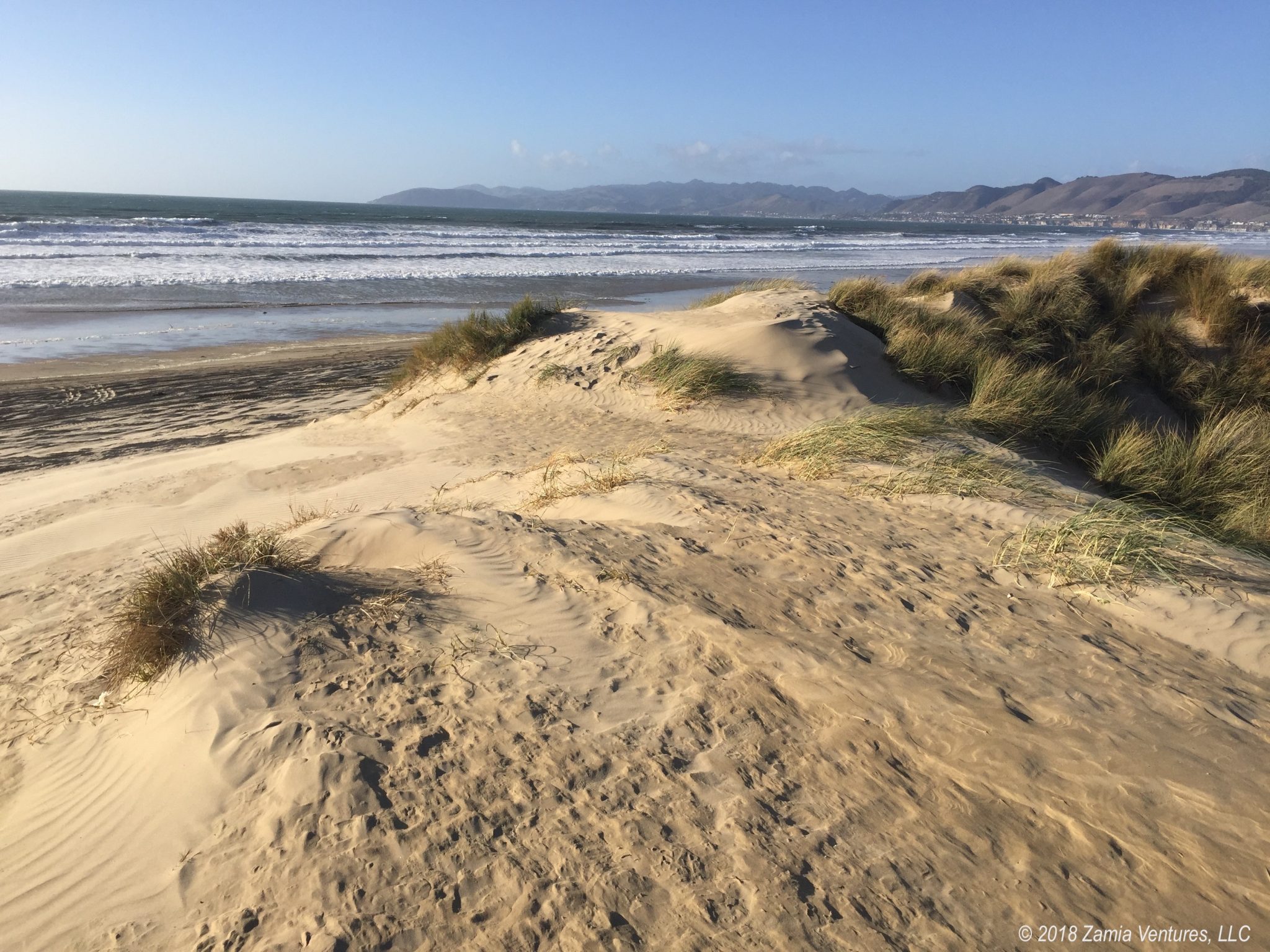
What an amazing ecosystem these Redwood forests are and your great photographs and in-depth descriptions gives one the feeling of sharing your experiences.
I am so glad these wonderful places in our country have been protected and preserved for the people instead of being available for commercial interests.
It’s certainly good that this small remaining section has been preserved. I can only imagine what this area was like when the redwood forests covered 2 million acres!
really scenic – i will have to take the family there.
be safe in Napa with the smoke. at least we are seeing some improvements in our area today.
I think the family would love the hiking. There are also some beaches, but not as nice as the ones near you.
We, too, were blown away by the silence we found in the Redwoods. There were times we just stopped our hike and took it all in – sweet, sweet quiet in an endlessly noisy world. Just lovely…. I’m glad you all got your truck back up and running. We’ve dealt with our fair share of repairs this year and have had to roll the dice a million times on mechanics. We are always thankful for online reviews. Absent those, we’d have no earthy idea what we were signing up for. You definitely lucked out by getting a referral from the dealership. Hopefully you’ll be in for smooth sailing going forward!
Whenever I think “what else will we have to deal with??” I remember how many issues you guys have encountered. For the most part, we’ve had no issues and have been doubly blessed with really good weather. Can’t ask for much more!